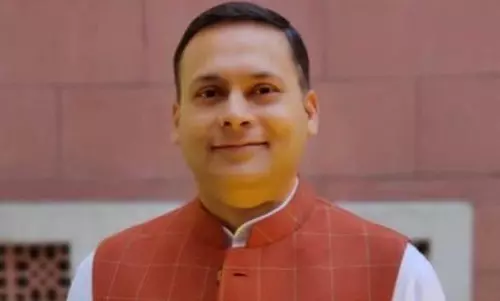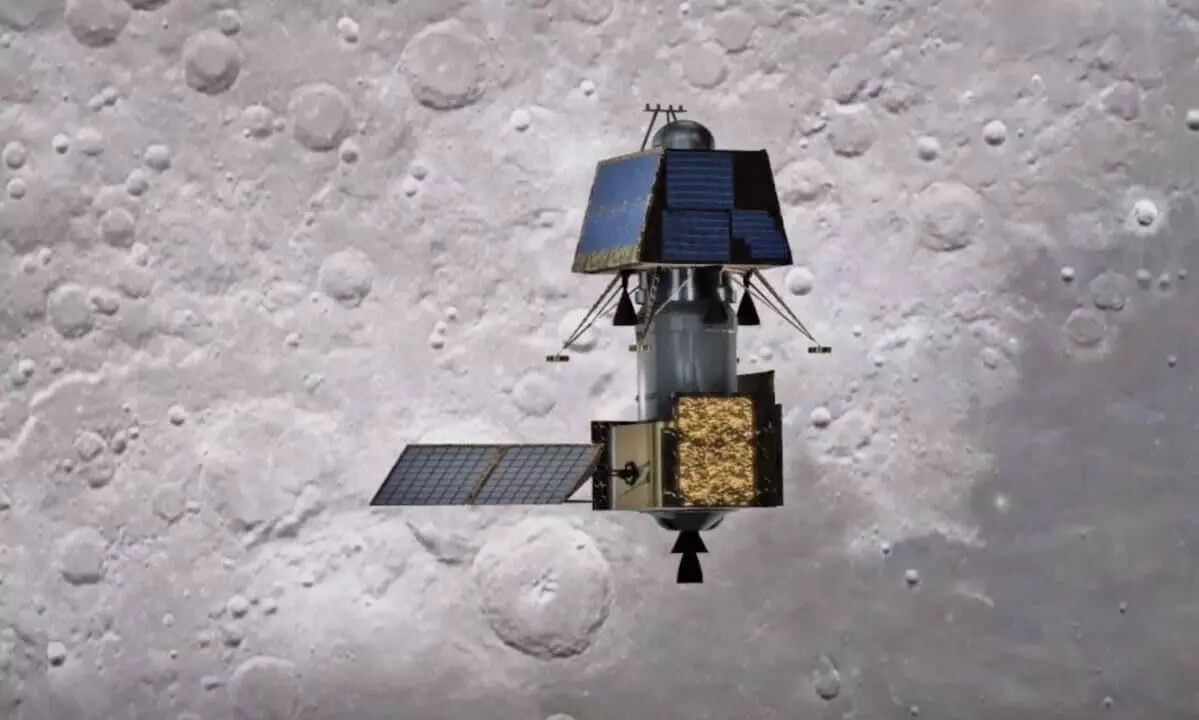
ISRO up with 3rd moon mission, scheduled for June next
text_fieldsChandrayaan 2
New Delhi: The Indian Space Research Organisation (ISRO) is planning to launch its third mission to the moon in June next year after the first two failed. The new probe will have a more advanced lunar rover onboard, an important item for future inter-planetary explorations, PTI reported
ISRO has also lined up the first test flight of the ''abort mission'' for Gaganyaan, the country's first human spaceflight, early next year.
Chairman of the Indian space agency, S Somnath, said, "Chandrayaan-3 (C-3) launch will be in June next year onboard the Launch Vehicle Mark-3 (LVM3)."
The agency plans to send astronauts to orbits by 2024 end, and the same will be carried out after successful abort missions and uncrewed test flights.
In September 2019, India'sIndia's first attempt to land a rover on the moon failed after Chandrayaan 2, with its Vikram lander, crashed on the moon's surface.
Somnath said, "C-3 is ready now. It is not a replica of C-2. The rover is there. The engineering is significantly different. We have made it more robust so that it does not have problems like last time.""
The ISRO chairman said, "There are many changes. The impact legs are stronger. It will have better instrumentation. In case something fails, something else will take over."
He said the rover would also have different methods to calculate the height to be travelled, identify hazard-free locations and have better software.
The rover will also have different methods to calculate the height to be travelled, identify hazard-free locations and have better software, he said.
On Gaganyaan, which plans human flights, Somnath said that ISRO would run six test flights before actually flying humans into orbit.
He added that preparations for the Gaganyaan probe were moving forward at a slow but firm pace. "This is the right way to put it. It is a very complex mission. We cannot boast about it. It requires very critical steps to be crossed," he said.
The first un-crewed flight of Gaganyaan will be after two abort missions to demonstrate that the space agency has the capabilities to rescue the crew in case of any eventuality.
The first abort mission is likely to be carried out in trans-sonic conditions when the spacecraft is travelling at the speed of sound after reaching an altitude of 10-15 km, Mr Somnath said.
The second would entail demonstrating crew rescue capabilities when the spacecraft is travelling at twice the speed of sound and in ""not so good"" aerodynamic conditions.
As part of the abort mission, the space scientists will have to sail the crew from the launch vehicle using a saving system, land the capsule carrying the crew in water and collect it.
"If this is successful, we will repeat it once again, and then we will go for an uncrewed mission. The unmanned mission will be a full-fledged rocket. It will go to orbit, then it will come back," Mr Somnath said.
"We will repeat the abort missions two more times, followed by another unmanned mission," he said.
























